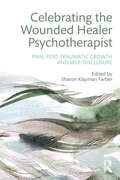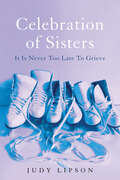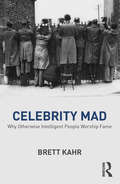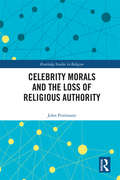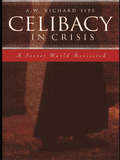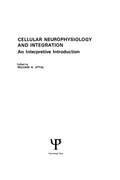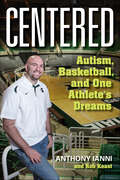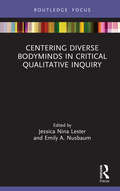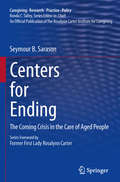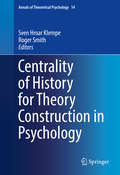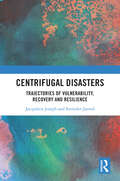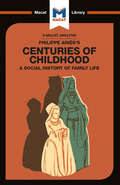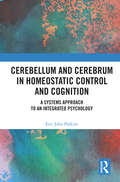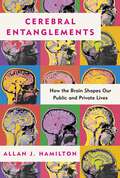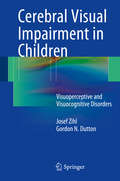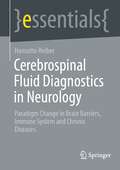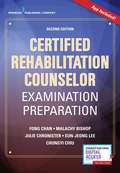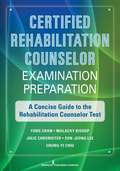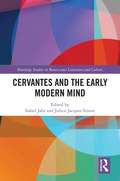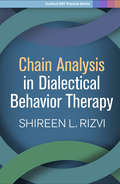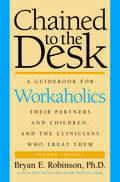- Table View
- List View
Celebrating the Wounded Healer Psychotherapist: Pain, Post-Traumatic Growth and Self-Disclosure
by Sharon Klayman FarberWhy would someone decide to become a psychotherapist? It is well-known within the field that psychoanalysts and psychotherapists are often drawn to their future professions as a result of early traumatic experiences and being helped by their own psychoanalytic treatment. While dedicating their lives to relieving emotional suffering without being judgmental, they fear compromising their reputations if they publicly acknowledge such suffering in themselves. This phenomenon is nearly universal among those in the helping professions, yet there are few books dedicated to the issue. In this innovative book, Farber and a distinguished range of contributors examine how the role of the ‘wounded healer’ was instrumental in the formulation of psychoanalysis, and how using their own woundedness can help clinicians work more effectively with their patients, and advance theory in a more informed manner. Celebrating the Wounded Healer Psychotherapist will be of interest to psychoanalysts and psychoanalytic psychotherapists, graduate students in clinical disciplines including psychology, social work, ministry/chaplaincy and nursing, as well as the general public.
Celebration of Sisters: It Is Never Too Late To Grieve
by Judy LipsonFor Judy Lipson, her sisters were her compass, constant, champions, and competitors and for thirty years she suppressed the grief of losing her two beloved sisters.Judy lost her younger sister Jane at age twenty-two in an automobile accident and nine years later her older sister Margie at age thirty-five to a twenty year battle with anorexia and bulimia. It was not until 2011 that Judy began her journey to mourn for Margie and Jane.Judy experienced the reality that those who lose siblings are the forgotten mourners and they are left to take care of their parents and children. The impact of their loss takes a back seat.Through her participation and work prescribed in a complicated grief study, Judy learned to restore her well-being, happy memories of her sisters, and the passion the three of them had for figure skating. By bringing her sisters and their memories together more present in her life, Judy found peace.To honor the memory of her sisters, Judy created and continues to hold, Celebration of Sisters, an annual ice skating fundraiser which benefits Massachusetts General Hospital in Boston, Massachusetts.This is the story of how Judy used her memories and their shared love of ice skating to come full circle. When she performs on the ice, Judy feels Margie and Jane on each shoulder guiding her and whispering in her ear, "Judy, you've got this."This is a story of love, grief, and moving forward, even years after the loss.
Celebrity Mad: Why Otherwise Intelligent People Worship Fame
by Brett KahrThis short book by Professor Brett Kahr provides a psychoanalytic understanding of fame and celebrity in the early twenty-first century, building upon the bedrock foundations of the Freudian corpus. The book is divided into six chapters. Chapter One explores the psychology of the celebrity, questioning narcissistic and exhibitionist psychopathology, while Chapter Two examines the psychological state of those of who revel in the fame of others and in celebrity culture more broadly, and offers a discussion of the "Celebrity Worship Syndrome". Chapter Three provides a very brief history of the concept of celebrity itself, arguing that, contrary to popular opinion, the culture of celebrification cannot be blamed on twenty-first-century media moguls, but, rather, that such a preoccupation with famous personalities can be traced back to ancient times and demonstrates the need to broaden our analysis to include the role of deep, unconscious psychological forces. In Chapter Four, Kahr reviews some important theoretical concepts advanced by Freud and Winnicott, which provide an important foundation for the psychoanalytic study of fame, while Chapter Five provides a more comprehensive theory of the unconscious psychological roots of the need to worship fame and to seek it, drawing upon a multitude of sources, ranging from psychoanalytic theory and developmental psychological research, to film, archaeology, and, perhaps surprisingly, the history of infanticide. The book concludes, in Chapter Six, by studying the psychodynamics of celebrity and fame, arguing that being recognised by one’s family and friends in the intimate context of home life may well be the very best way to become a celebrity. Celebrity Mad outlines a psychoanalytic theory of the roots of our obsession with fame. It will be of great interest to psychoanalytic practitioners and researchers, as well as to readers interested in the psychology of fame.
Celebrity Morals and the Loss of Religious Authority (Routledge Studies in Religion)
by John PortmannThis book examines American popular culture to demonstrate that celebrities have superseded religious figures as moral authorities. As trust in religious institutions has waned over recent decades, the once frivolous entertainment fringe has become the moral center. Young people and voters increasingly take cues from actors and athletes. The book begins by offering a definition of celebrity and showing that the profile of celebrities has changed dramatically, particularly since the 1960s. They can now chart their own careers, manage their own personal lives and weigh in on pressing moral issues in a manner that hasn’t always been the case. This can be to the good, it is argued, for some counterintuitive reasons. Very few stars pretend to be moral exemplars, unlike the frequently hypocritical elites they have replaced. Others, however, are seemingly poorly qualified to speak on complex moral issues. In the end, it also turns out that who tells us how to feel about any moral issue counts at least as much as what they tell us. This is a fresh look at the impact of celebrity culture on contemporary morality and religious authority. As such, it will be of great use to academics working in religious studies and ethics, as well as popular culture and media studies.
Celibacy in Crisis: A Secret World Revisited
by A.W. Richard SipeIn the midst of the worst crisis the Catholic Church has seen in almost 500 years, this book challenges Catholic authorities to renew, rethink, or reform the long-standing institution of celibacy.
Cellular Neurophysiology and Integration: An Interpretive Introduction
by W. R. UttalFirst published in 1975. Because of its general importance to a number of related disciplines, students of the modern science of neurophysiology have benefited from time to time from an introductory survey presented at a more elementary level than is usually found in advanced textbooks. The dynamism of the field is such, however, that more up-to-date statements incorporating many of the exciting new findings concerning cellular neurophysiology are required periodically. This text is aimed at filling that need. It is an outgrowth of a part of a course on the neurophysiology of sensory processes taught by the author at The University of Michigan during the last ten years. This book is an attempt to present the subject matter at a level appropriate for advanced undergraduate students and first year graduate students whose knowledge of chemistry, physics, and mathematics is limited to introductory courses.
Centered: Autism, Basketball, and One Athlete's Dreams
by Anthony Ianni Rob Keast"They don't know me. They don't know what I'm capable of." Diagnosed with pervasive developmental disorder, a form of autism, as a toddler, Anthony Ianni wasn't expected to succeed in school or participate in sports, but he had other ideas. As a child, Ianni told anybody who would listen, including head coach Tom Izzo, that he would one day play for the Michigan State Spartans. Centered: Autism, Basketball, and One Athlete's Dreams is the firsthand account of a young man's social, academic, and athletic struggles and his determination to reach his goals. In this remarkable memoir, Ianni reflects on his experiences with both basketball and the autism spectrum. Centered, an inspirational sports story in the vein of Rudy, reveals Ianni to be unflinching in his honesty, generous in his gratitude, and gracious in his compassion.Sports fans will root for the underdog. Parents, teachers, and coaches will gain insight into the experience of an autistic child. And everyone will triumph in the achievements of Centered.
Centering Diverse Bodyminds in Critical Qualitative Inquiry
by Jessica Nina Lester; Emily A. NusbaumCentering Diverse Bodyminds in Critical Qualitative Inquiry directly responds to the call for engaging in a new critical qualitative inquiry with consideration to issues related to power, privilege, voice, identity, and agency, while examining the hegemonic power of ableism and ableist epistemologies. The contributing authors of this edited volume advance qualitative methods and methodological discussions to a place where disability embodiment and the lived experience of disability are potential sources of method and methodological advancement. Accordingly, this book centers disability, and, in so doing, examines methodological challenges related to normative and ableist assumptions of doing qualitative research. The range of chapters included highlights how there is no singular answer to questions about qualitative method and methodology; rather, the centering of diverse bodyminds complicates the normative desire to create method/methodology that is “standard,” versus thinking about method and methodology as fluid, emerging, and disruptive. As an interdisciplinary text on critical qualitative research and disability studies with an international appeal, Centering Diverse Bodyminds in Critical Qualitative Inquiry is valuable for graduate level students and academics within a broad range of fields including critical qualitative research methodologies and methods, disability studies, cultural studies, discourse studies, education, sociology, and psychology. Disciplines that engage in the teaching of qualitative research methodologies and methods, particularly those that foreground critical qualitative research perspectives, will also find the book appealing.
Centers for Ending: The Coming Crisis in the Care of Aged People (Caregiving: Research • Practice • Policy)
by Seymour B. SarasonAs people live longer and health care costs continue to rise and fewer doctors choose to specialize in geriatrics, how prepared is the United States to care for its sick and elderly? According to veteran psychologist Seymour Sarason's eloquent and compelling new book, the answer is: inadequately at best. And rarely discussed among the grim statistics is the psychosocial price paid by nursing home patients, from loneliness and isolation to depression and dependency. In Centers for Ending, Dr. Sarason uses his firsthand experience as both practitioner and patient in senior facilities to reveal wide-ranging professional and moral issues affecting this seemingly familiar terrain. Insensitive medical personnel, poorly trained nurses and aides, indifferent administrators, and a prevailing culture content with treating "bodies" instead of human beings are identified as contributing factors. Drawing on America's rich history of large-scale solutions to social problems, Dr. Sarason offers penetrating insights and bold suggestions in such areas as: The widening care gap between haves and have-nots.Why professional caregivers fail to understand patients.The nursing home resident as immigrant.Why previous reform efforts have not worked.The need for a Presidential commission for the elderly.The scenario if conditions are allowed to remain as they are or worsen. This concise volume is essential reading for researchers, graduate students, professionals, practitioners, and policy makers across such fields as geriatric medicine, health psychology, social work, public health, and public policy. Centers for Ending is a clarion call to be ignored at great cost to our elders and ourselves.
Centrality of History for Theory Construction in Psychology (Annals of Theoretical Psychology #14)
by Roger Smith Sven Hroar KlempeThis book offers a comprehensive overview of the purpose of history for psychology. Its purpose is to ask why history should be of concern to psychologists in teaching and research, and in theory and in practice. The future position of humanities subjects is currently highly debated on all fronts. Chapters focus on the arguments from psychologists, upgrade the precision and quality of discussion, and thus, provide a base for affirming the place of history of psychology in the broad field of psychological activity. A fundamental question dominates the discussion. Is the purpose of the history of psychology to serve current psychology, rather than to contribute to historical knowledge - and to enter large debates about what historical knowledge means for being human? If the answer is yes, as most psychologists who come to the issues will presume, in what ways? Are these ways philosophically grounded, or do the social and political conditions of power and funding in universities dominate the arguments? In this volume, the contributors demonstrate the relation between historical investigations and current practice. Featured topics include: The history of psychology and its relation to feminism. The history of psychology and its relation to current research assessment and curriculum. The history of science and its relation to psychology. The metalanguage for psychology. Case studies of history in theory construction. Centrality of History for Theory Construction in Psychology will be of interest to psychologists, professors, graduate psychology students, and scholars in the human sciences.
Centres and Peripheries of Psychoanalysis: An Introduction to Psychoanalytic Studies
by Ruth Freeman Richard EkinsThis book provides an excellent introduction to the broad field of applied psychoanalysis and deals appropriately with clinical psychoanalytic concepts capable of being transferred from the analyst's consulting-room. It discusses developmental factors entering into forms of religious experience.
Centrifugal Disasters: Trajectories of Vulnerability, Recovery and Resilience
by Surinder Jaswal Jacquleen JosephThis book focuses on centrifugal disasters that impact a group of seemingly unconnected people congregated temporarily often by chance, unlike centripetal disasters that strike an extant community of people. In India as well as in South Asia, centrifugal disasters have increased significantly in the last few decades, however the research remains limited as they are often categorized as accidents. The book documents three such major disaster events––26/11 terror attacks and 13/7 blasts in Mumbai, and hospital fire in Kolkata–– and analyses the lived and felt experiences of the survivors and their families. Drawing on the authors’ experience of working with survivors, first responders (police, health workers), as well as policy makers, the book suggests a model of disaster intervention that bridges academia and praxis expertise. Besides providing a rights framework for disaster interventions, it also explores the moral and ethical considerations around disaster interventions. This important book will be of interest to students and practitioners of disaster management including first responders and those working in public management, risk management, hazards and disasters, emergency response, terrorism and political violence. It will also be useful to mental health professionals, social workers, psychologists, civil society organizations, as well as bureaucrats and policy makers.
Centuries of Childhood (The Macat Library)
by Joseph Tendler Eva-Marie PragIn Centuries of Childhood, the French historian Philippe Aries offers a fundamentally fresh interpretation of what childhood is and what the institution means for society at large. Aries's core idea is that ‘childhood,’ as we understand it today – a special time that requires special efforts and resources – is an invention of the 19th century, and that before that date children were in effect thought of as small adults. This led him to a re-evaluation of sources that suggested a second, crucial, conclusion: the idea that these competing visions of childhood were the products of two very different conceptions of human society. <P><P>An earlier, essentially communal, social ideal, Aries wrote, had been supplanted by a society far more family-centric and hence inward-facing. In his view, moreover, this increased focus on childhood posed a direct challenge to a well-entrenched social order. ‘One is tempted to conclude,’ he wrote, ‘that sociability and the concept of the family were incompatible, and could develop only at each other's expense.’ <P><P>This revolutionary thesis, which has inspired and infuriated other historians in roughly equal measure, was made possible by Aries's determination to understand the meaning of the evidence available to him and highlight problems of definition that others had simply glossed over, making Centuries of Childhood an important example of the critical thinking skill of interpretation.
Century of Insight: The Twentieth Century Enlightenment of the Mind
by Derry MacdiarmidCentury of Insight is the story of the discovery of the unconscious mind, based on the author's teaching of psychotherapy throughout his career. Beginning with the ideas of Freud and Jung, it is a journey that describes, through case histories, explanation and humour, how successive ideas have created a body of knowledge that the author calls the "Psychodynamic Enlightenment" of the 20th century. Whilst essentially it is a story of the 20th century, it includes a backdrop from tribal societies, and also ideas from 19th century Europe, including existentialism. In Part I, the ideas of Freud, Jung, and Adler are explained, their points of difference, and then how they disagreed so violently that they had to break with each other. Their individual theories and their personal conflict are understood from the story of their personalities and background. Why could Freud not tolerate the expansive Jung, and why did Jung clash so badly with his 'father'?
Cerebellum and Cerebrum in Homeostatic Control and Cognition: A Systems Approach to an Integrated Psychology
by Eric John ParkinsCerebellum and Cerebrum in Homeostatic Control and Cognition presents a ground-breaking hybrid-brain psychology, proposing that the cerebellum and cerebrum operate in a complementary manner as equal cognitive partners in learning based control. The book synthesises contemporary neuroscience and psychology in terms of their common underlying control principle, homeostasis. Drawing on research and theory from neuroscience, psychology, AI and robotics, it provides a hybrid control systems interpretation of consciousness and self; unconscious mind; REM dream sleep; emotion; self-monitoring and self-control; memory, infantile amnesia; and, cognitive development. This is used to investigate different elements of cerebellum-cerebrum offline interaction; including attention and working memory, and explores cerebellar and cerebral contributions to various aspects of a number of disorders; including ADHD, ASD and schizophrenia. Presenting original ideas around neuropsychological architecture, the book will be of great interest to academics, researchers, and post-graduate students in the fields of neuropsychology, cognitive psychology, neuroscience and clinical psychology.
Cerebral Entanglements: How the Brain Shapes Our Public and Private Lives
by Allan J. HamiltonA profound and profoundly important book that, using the most up-to-date revolutionary discoveries in neuroscience, shows us how to understand the brain; how it allows us to think, feel, experience and perceive, written by an acclaimed Harvard-trained neurosurgeon.It took a brain surgeon who&’s spent a lifetime in the operating room experiencing the brain's union of form and function to write this book. Cerebral Entanglements, unlike most books on the brain, looks at the intimate and vital emotions in our lives, and shows as well, how neuroimaging studies can transform our understanding of crucial emotional or mental health concerns. Why do we love? Why do we hate? Why do we kill? Why do we laugh? Why do we have faith? Why does time stand still or speed up? Focusing on the nature of consciousness, affection, trust, romance, empathy, kindness; prejudice, sadness, happiness, depression, grief, and the nature of laughter, the author shows us how neuroscience has changed our understanding of these emotions as he explores the extraordinary revelations that have emerged from brain imaging and functional studies. We see that we are the first generation to perceive the contours of a human thought, track the course of an emotion, even watch memory come together. Allan Hamilton writes clearly and accessibly, about the complex science driving our emotions and experiences, and shows how our newfound knowledge can impact our well-being, individually and as a society. As the book explores the nature of happiness, laughter, stress, PTSD. Hamilton writes about how the brain perceives and experiences music, memory, and time itself.
Cerebral Laterality: Theory and Research
by Frederick L. KitterleResearch on clinical populations and studies of normal individuals support the conclusion that there are functional differences between the cerebral hemispheres. This book captures some of the major developments in the field of cerebral laterality research of the last five years. These include lateralization in non-human primates, computational models of hemispheric processing, hemispheric transfer and interaction, perceptual asymmetries, techniques to measure dynamic changes in hemispheric processing of information, and new conceptualizations of the relation between handedness and cerebral laterality. The topics discussed exhibit an interconnectedness such that the approaches and techniques used in one area of cerebral laterality research have implications for research in other disciplines. They also reflect changes in the conceptualization of general theoretical issues regarding cerebral laterality research.
Cerebral Visual Impairment in Children: Visuoperceptive and Visuocognitive Disorders
by Gordon N. Dutton Josef ZihlCerebral visual disorders have far-reaching consequences for child development. These have profound adverse effects on children's education and success in school and also in later life, but, unfortunately, cerebral visual disorders often remain undiagnosed and untreated in the pediatric population. This book provides a state-of-the-art account of what is known about the development and disorders of visual perception in children. It covers the development and disorders of visual perception in children, their assessment, early intervention and management in an interdisciplinary context, both from a scientific as well as clinical perspective. Case studies illustrate the recommended assessment and rehabilitation procedures; synopses, boxes and check-lists complement the presentation of our recommendations for clinical practice.
Cerebrospinal Fluid Diagnostics in Neurology: Paradigm Change in Brain Barriers, Immune System and Chronic Diseases (essentials)
by Hansotto ReiberThis Springer essential explains the theoretical foundations for knowledge-based interpretation of medical laboratory data. Self-organization of biological structure, non-linear dynamics of complex systems and immunological network theories make it possible to describe pathomechanisms and diagnostics, especially of chronic diseases, as an expression of a phenotypic biology and to develop concepts for causal therapies.The book shows how CSF diagnostics with a diagnostic report integrating all laboratory data can identify disease-typical patterns for the differential diagnosis of bacterial, viral, parasitic, oncological, chronic inflammatory, autoimmunological and psychiatric diseases. A CSF app is provided as a tutorial program.The translation from German was done with the help of artificial intelligence. A subsequent human revision was done primarily in terms of content.
Ceremonies for Spiritual Healing and Growth
by Henry CloseCeremony as therapyFormal ceremonies seem to be universal in human experience, addressing something very deep and basic in the human psyche. They tap into that vast subconscious reservoir of wisdom and strength that every human being possesses. To these qualities ceremonies add their own understandings of life and of God. They emphasize the presence of God in all things. The important transitions in our lives inevitably create anxiety-even happy transitions, such as weddings. We move from the familiar to the unknown. Our role in the community may change, which means that we will be treated differently. Sometimes it is our own sense of who we are that changes. We seek to live differently. All of these changes have an anxiety of their own.Ceremonies use the "languages" of the heart-metaphor, poetry, meditation, music, liturgy, and drama-to address those anxieties. Bypassing the sterility of logic and analysis, a ceremony evokes the power to affirm and to heal that straightforward rational communication cannot touch. A ceremony has the quality of set-apartness. Something special is happening! Words spoken in a ceremony will have much more impact than those same words would have in a more ordinary context. A ceremony brings new perspective to things with which we struggle. Many ceremonies enlist the support of one&’s community. The leader often represents one&’s spiritual tradition, and other members of the community may be present. Even if the ceremony is done in the privacy of one&’s home or of a therapist&’s or pastor&’s office, others are present in the participant&’s imagination. Ceremonies also involve God, whose presence is acknowledged and whose blessing and support are assured. The ceremonies presented here are down-to-earth and practical. They can easily be adapted to many situations, and can stimulate the reader to create his/her own ceremonies to meet the unique needs of the persons to whom he/she ministers.Some of the ceremonies in this book are for use in a public place: weddings funerals a ceremony for grievingOthers are more private, for use in a pastor&’s/therapist&’s office or in one&’s home: adoption funeral for an aborted baby support for a rape survivor the commitment to stop smoking addressing children&’s phobias leaving home forgiving another person forgiving oneself and moreThis book is a first! Not just a discussion about ceremonies, but a collection of ceremonies addressing a wide variety of situations! It will be innovative and insightful reading for pastors, therapists, and others for whom the "languages" of analysis and logic are not enough.
Certified Rehabilitation Counselor Examination Preparation: A Concise Guide To The Rehabilitation Counselor Test (Second Edition)
by Fong ChanThis concise, practical study guide, now in its second edition, offers a complete, detailed review of the certified rehabilitation counselor exam to help graduate students and professionals in rehabilitation counseling effectively prepare for and pass the exam. Authored by rehabilitation counselor educators cited for their teaching effectiveness, research, and scholarship, this fully revised and updated second edition reflects the new, expanded curriculum standards regarding counseling/psychotherapy content for CORE/CACREP graduate programs in clinical rehabilitation counseling and CORE standards for rehabilitation counselors. <p><p> The second edition retains the user-friendly structure and organization of the first, and includes 50 additional questions for a total of nearly 300 Q&As with rationales, answer keys, multiple-choice questions, learning objectives, and more. Each chapter contains a concise overview of the topic, summary tables of key concepts, practice questions with annotated answers, and links to related web-based materials.
Certified Rehabilitation Counselor Examination Preparation: A Concise Guide to the Rehabilitation Counselor Test
by Fong Chan Malachy Bishop Julie Chronister Eun-Jeong Lee Chung-Yi ChiuThis user-friendly new study guide will help graduate students and professionals in rehabilitation counseling to prepare thoroughly for the CRC examination. It provides a complete, detailed review of the CRC exam built on the most recent, empirically based rehabilitation counselor roles and function studies. Each chapter contains a concise overview of the topic, summary tables of key concepts, practice questions with annotated answers, and links to related web-based materials.
Cervantes and the Early Modern Mind (Routledge Studies in Renaissance Literature and Culture)
by Isabel Jaén Julien Jacques SimonThis book explores the work of Cervantes in relation to the ideas about the mind that circulated in early modern Europe and were propelled by thinkers such as Juan Luis Vives, Juan Huarte de San Juan, Oliva Sabuco, Andrés Laguna, Andrés Velásquez, Marsilio Ficino, and Gómez Pereira. The editors bring together humanists and scientists: literary scholars and doctors whose interdisciplinary research integrates diverse types of sources (philosophical and medical treatises, natural histories, rhetoric manuals, pharmacopoeias, etc.) alongside Cervantes’s works to examine themes and areas including emotion, human development, animal vs. human consciousness, pathologies of the mind, and mind-altering substances. Their chapters trace the cognitive themes and points of inquiry that Cervantes shares with other early modern thinkers, showing how he both echoes and contributes to early modern views of the mind.
Chain Analysis in Dialectical Behavior Therapy (Guilford DBT® Practice Series)
by Shireen L. RizviFilled with detailed clinical examples, this book expertly breaks down the process of behavioral chain analysis/m-/the critical foundation for assessment and problem solving in dialectical behavior therapy (DBT). Experienced DBT clinician and trainer Shireen L. Rizvi provides knowledge and skills for conducting chains effectively and overcoming obstacles. She presents guiding principles, questions to ask, strategies for engaging clients and addressing difficult-to-assess problems, and ways to avoid common mistakes. The book describes how to incorporate other essential DBT strategies (such as validation) into chain analysis, as well as how to conduct chains in the context of individual therapy, group skills training, phone coaching, and the consultation team.
Chained to the Desk (Third Edition)
by Bryan E. RobinsonAmericans love a hard worker. The worker who toils eighteen-hour days and eats meals on the run between appointments is usually viewed with a combination of respect and awe. But for many, this lifestyle leads to family problems, a decline in work productivity, and ultimately to physical and mental collapse. Intended for anyone touched by what Robinson calls "the best-dressed problem of the twenty-first century," Chained to the Desk provides an inside look at workaholism's impact on those who live and work with work addicts--partners, spouses, children, and colleagues--as well as the appropriate techniques for clinicians who treat them. Originally published in 1998, this groundbreaking book from best-selling author and widely respected family therapist Bryan E. Robinson was the first comprehensive portrait of the workaholic. In this new and fully updated third edition, Robinson draws on hundreds of case reports from his own original research and years of clinical practice. The agonies of workaholism have grown all the more challenging in a world where the computer, cell phone, and iPhone allow twenty-four-hour access to the office, even on weekends and from vacation spots. Adult children of workaholics describe their childhood pain and the lifelong legacies they still carry, and the spouses or partners of workaholics reveal the isolation and loneliness of their vacant relationships. Employers and business colleagues discuss the cost to the company when workaholism dominates the workplace. Chained to the Desk both counsels and consoles. It provides a step-by-step guide to help readers spot workaholism, understand it, and recover.
